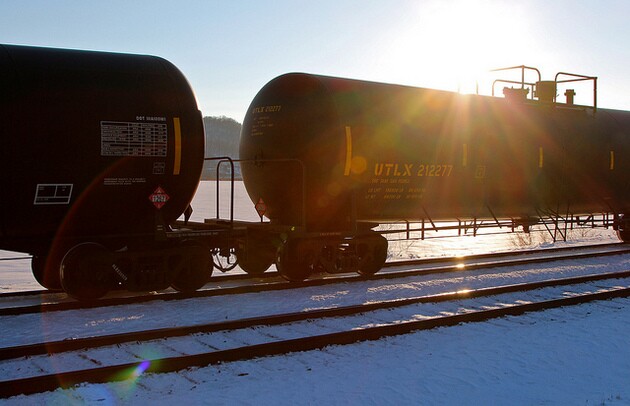West Virginia Train Disaster Spikes Opposition to California Project

A disastrous train derailment that spilled thousands of gallons of crude oil and forced the evacuation of two West Virginia communities on Monday is causing trouble for proponents of a similar line on California's Central Coast. The city of San Luis Obispo this week pledged to oppose the line that will run near town.
The proposed 1.3-mile Santa Maria Phillips 66 rail spur project would connect the company's Santa Maria refinery near Nipomo to an existing Union Pacific rail line, allowing the refinery to receive crude oil by rail. The refinery now receives oil via pipeline from offshore oil fields in the Santa Barbara Channel.
But that rail line would mean as much as 1.6 million gallons of crude could be traveling through nearby cities each day. And with the oil train that derailed Monday in Mount Carbon, WV, still ablaze as of Wednesday night, the prospect of a similar accident on California's Central Coast has locals even more worried.
On Tuesday night, San Luis Obispo's City Council voted unanimously to ask the city's mayor and Planning Commission to reject the prospect of oil shipments through San Luis Obispo on the Union Pacific line. The council has plenty of company in this decision: California communities along the length of the Union Pacific line from Davis to Moorpark have expressed opposition to the Santa Maria project.
San Luis Obispo County is the lead agency making the decision whether to approve the spur, so opposition from the city of San Luis Obispo doesn't end the project. But the city council's vote is a significant win for opponents of the rail project.
The train that derailed in West Virginia, a CSX train hauling crude from North Dakota's Bakken oil fields to a refinery in Virginia, was fitted with tank cars designed to a supposedly safer new standard set in 2011. Though West Virginia officials couldn't say Wednesday how much crude had been spilled into the tributary of the Kanawha River adjacent to the tracks, they did report that 5,000 gallons of spilled oil had been cleaned up at the derailment site. The 27 train cars that derailed in West Virginia each held 30,000 gallons of crude oil.
According to the Santa Maria project's Draft Environmental Impact Statement, the rail spur would be used five times a week by oil trains of up to 80 tank cars, each train carrying between 49,670 and 53,532 barrels of oil. (That range in gallons: between 1.56 and 1.67 million.)
Crude could arrive at the refinery from either Northern or Southern California, meaning communities from the Bay Area to Los Angeles could be subject to the oil shipments.
"With the latest derailments and catastrophic explosions, it's time to rethink our energy infrastructure," Nipomo resident Larry Shinderman told the San Luis Obispo City Council. "The health and safety and the economic vibrancy of San Luis Obipso is more important than pandering to the special interests of the Phillips shareholders."



